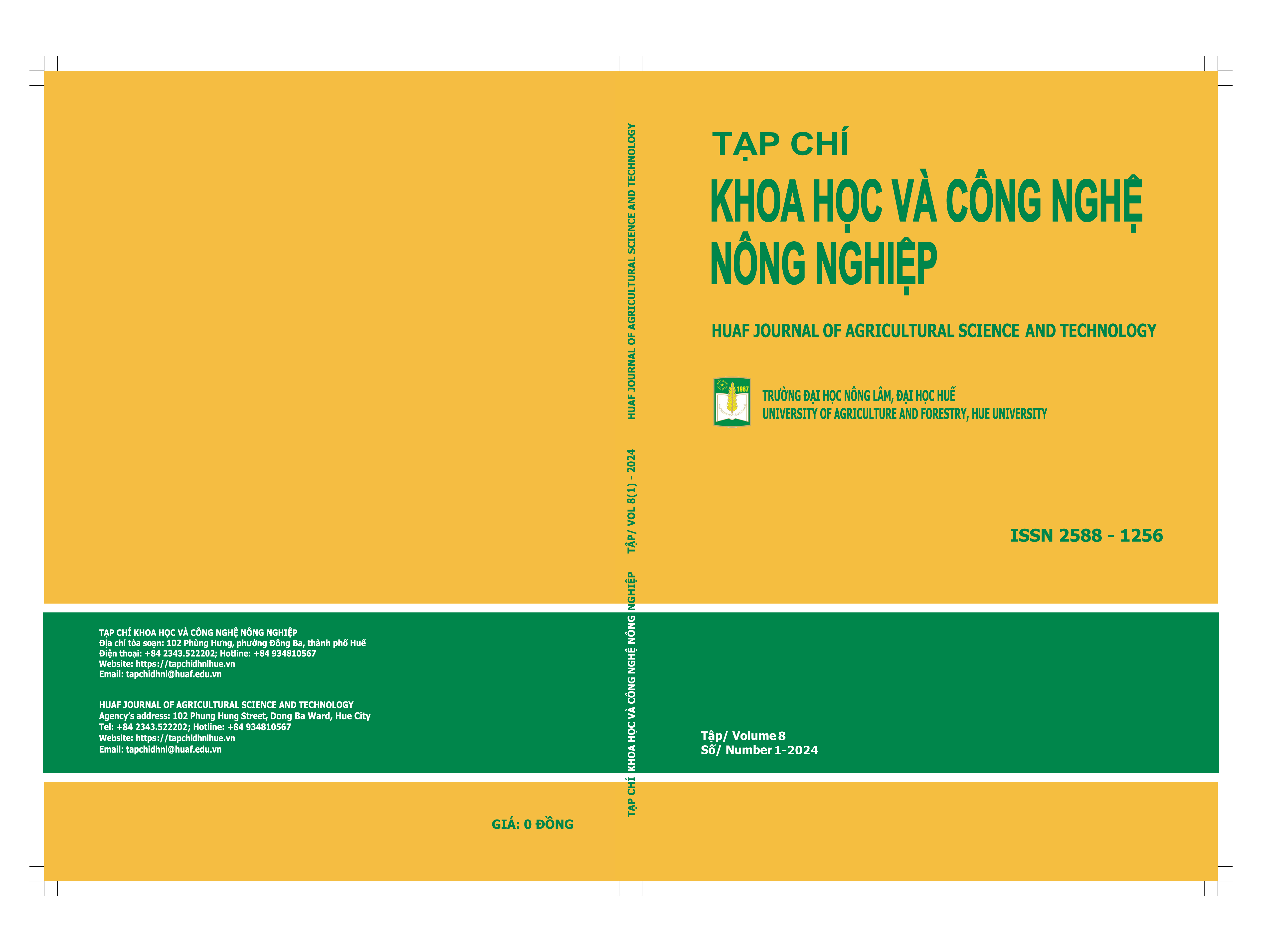##plugins.themes.huaf_theme.article.main##
Abstract
The Bo Chinh ginseng plant has been experimentally planted in Nham commune, A Luoi district, Thua Thien Hue province since 2021. Due to favorable natural conditions for development, the area under ginseng cultivation in A Luoi district has increased by nearly 20 hectares. Scientists are strongly interested in researching, evaluating, and exploiting the potential value of the main ginseng plant. Several bioactive compounds, such as polysaccharides, saponins, and flavonoids, have been shown to exist in the Bo Chinh ginseng plant. To understand the influence of factors in the extraction process, the study focused on investigating the ability to recover saponins from the Bo Chinh ginseng roots based on various parameters such as solvent concentration, ratio of material to solvent, temperature, and time. Results showed that the highest efficiency of saponin extraction from the Bo Chinh ginseng plant is achieved by using ethanol solvent with a concentration of 60%, a ratio of raw materials to solvent of 1/16, and extraction at 70oC for 3 hours (0,66 g per 10 g dry weight of samples). These parameters are suitable for the extraction of total saponins from Bo Chinh ginseng. In addition, a trial was conducted to produce a new product, which is the Bo Chinh ginseng extract mixed with honey at a ratio of 50/50. This product has a beautiful color, a characteristic taste, and is suitable for the preferences of consumers.


